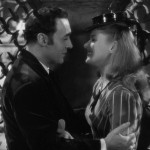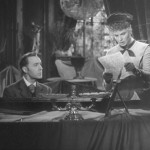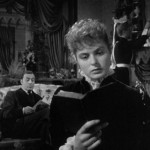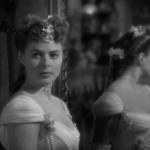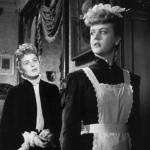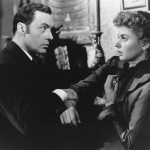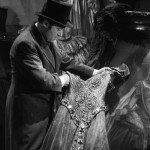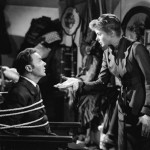
Gaslight – 1944
I described this movie to a friend as being like a Hitchcock film without the Hitchcock. It had the same creepy aura as Hitchcock’s only Best Picture winner, 1940’s Rebecca. Gaslight starred Charles Boyer and Ingrid Bergman in two incredible performances, as well as Joseph Cotton, and an 18 year old Angela Lansbury. Boyer, Bergman, and Lansbury were all nominated for Oscars for Best Actor, Best Actress, and Best Supporting Actress, respectively.
It really was a great psychological suspense-thriller, a film noir. Boyer plays Gregory Anton, a pianist who meets and marries a beautiful young singer named Paula Alquist, niece to the famous soprano, Alice Alquist, who had been murdered when Paula had been a child. The newlywed couple move into the house in which the unsolved murder had taken place.
Paula is haunted by the ghosts of the past, and it soon becomes apparent that she is losing her mind. She becomes forgetful and loses things. She steals things and forgets her own thievery. She alone hears mysterious noises coming from the attic where all her aunt’s old things have been stored. And she believes that the gaslights go dim every evening when nobody else can see them.
Bergman was fantastic. Her portrayal was genius. The descending levels of her tenuous hold on reality are clear and easy to see, meaning that she doesn’t go crazy all at once – It happens in stages. Not only that, but she was also easy on the eyes. It was a plum role that any actress would have loved to play, but Bergman really did it justice.
Boyer also delivered a wonderful performance. As the criminal who was going out of his way to push her into madness, Boyer kept me guessing until the very end. There were times I wasn’t sure who to believe. But when the truth was revealed in the end, that his entire relationship with Paula had been a scam for him to get back into the house where he had murdered her aunt, he got his just deserts in a satisfying way. Sure he was simply carted off to jail, supposedly to await trial and execution, but the big climax scene was so well written.
Joseph Cotton played a Scotland Yard police investigator who recognizes Boyer from the events surrounding the original murder. He begins asking questions and snooping around. He uncovers Gregory’s true identity and his true motives just in time to save Paula’s sanity and put her persecutor in prison.
After Gregory is caught, but before he is taken away, Paula asks to see him alone. Her little speech was so good that I’ll include it here. “If I were not mad, I could have helped you. Whatever you had done, I could have pitied and protected you. But because I am mad, I hate you. Because I am mad, I have betrayed you. And because I’m mad, I’m rejoicing in my heart, without a shred of pity, without a shred of regret, watching you go with glory in my heart!” The whole scene was very well played.
Also, I have to give a special thumbs-up to Angela Lansbury. She had a rather small part, but it was very memorable. She was the couple’s housemaid. Now, maybe I was biased towards Lansbury because I already like her as an actress, but she really did well with the small role. She was supposed to subtly despise Paula because she was secretly lusting after Gregory, and it all came across quite clearly, without being over-the-top.
In my research, I found that Patrick Hamilton’s original 1938 play had already been made into a movie in 1940, starring Anton Wallbrook and Diana Wynyard. It was a British film, and I was surprised to read that when MGM bought the rights to do a remake, they allegedly ordered that all prints of the 1940 film be destroyed. Bad show, MGM! Fortunately, if this were true, the order was not successfully carried out.
Also, though director George Cukor is a hit or miss in my book, he did his job well with Gaslight, making great use of on-screen and off-screen action, and creative use of shadows to imbue the film with the right mood. I only know him from his other Academy Award nominated films like 1933’s Little Women, 1935’s David Copperfield, 1936’s Romeo and Juliette, which I hated, 1940’s Philadelphia Story, and of course 1964’s Best Picture winning My Fair Lady. So, I suppose, in retrospect, he had more hits than misses.
The only thing I could have done without was the annoying character of Miss Bessie Thwaites, played by Dame May Whitty. She was an old busy-body who was… I don’t know – comic relief? She really had no purpose but to be a bothersome neighbor who seemed interested in death and unsolved murder cases. She could have been written out of the script and the movie would have been better off.
